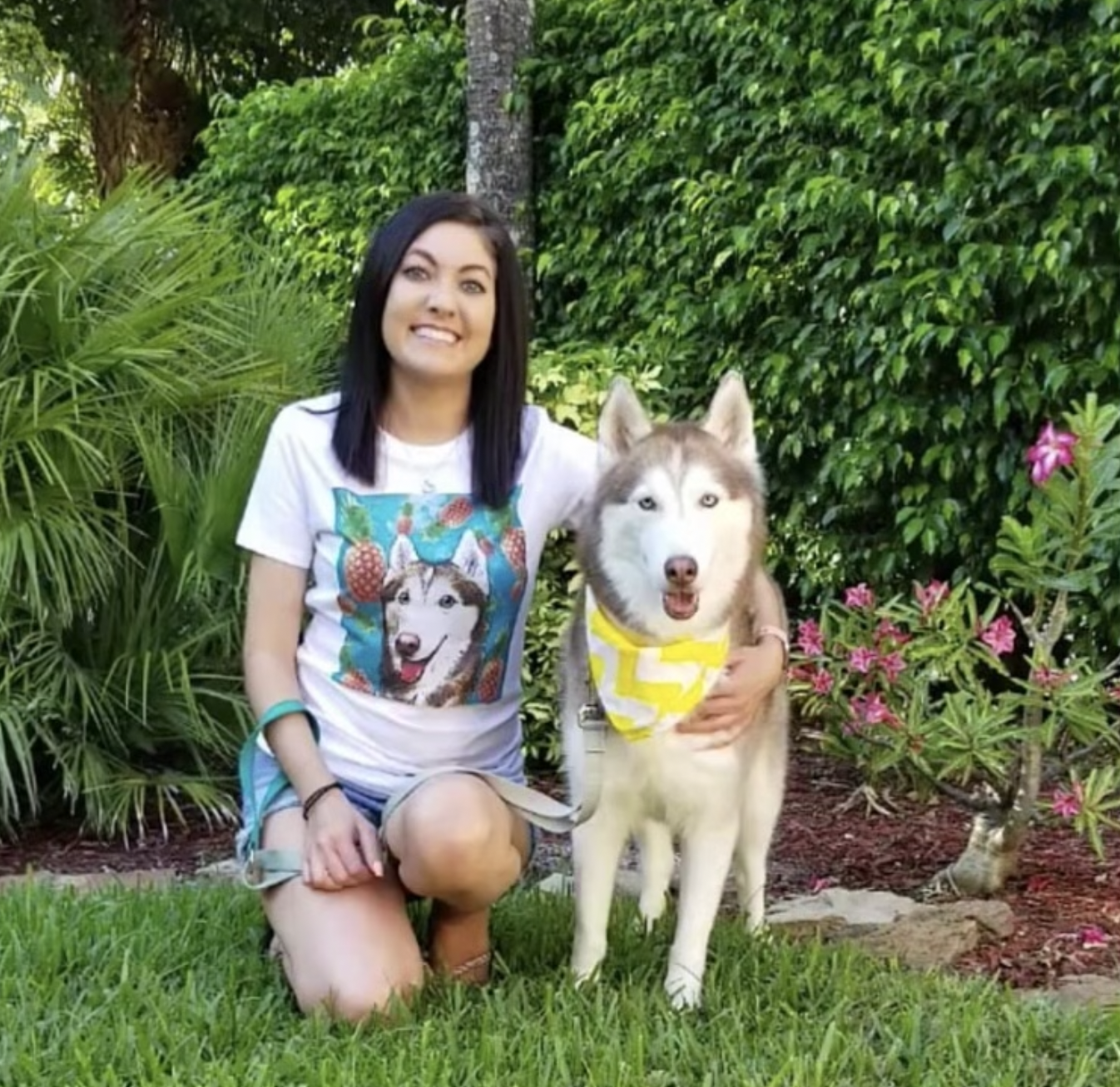Did you know that small dog breeds are more likely to be prone to dental abnormalities1, and are 3 times more likely to have periodontal disease than medium or large breed dogs2?
That’s a heck of a good reason to start getting serious about brushing those tiny teefers and get an oral check-up at your vet.
Related Article: Are There Dentists For Dogs?
Why Are Small Breed Dogs More Prone To Dental Issues?
Studies show that periodontal disease (infection and inflammation of the gums leading to tooth decay) is 3 times more likely to develop in dogs who weigh less than 22 pounds (10kg)2. Dental abnormalities and other contributing factors also lead to higher incidences of periodontal disease in small dog breeds1, such as:
- Genetic facial and skull structures create tendencies toward dental abnormalities, which can increase risk of periodontal disease. Examples include:
- Disproportionately large teeth relative to jaw size
- Brachycephalic (a.k.a. flat-faced breeds) breeds prone to malocclusions (misaligned teeth)
- Overcrowding as a result of squeezing all 42 teeth into a tiny mouth
- Increased risk for jaw fracture
- Tendency for small breed dogs to have less interest in oral dental abrasion activities2 (or be given less access to them). Examples include:
- Teeth brushing
- Dental chews
- Playing with chew toys
- Fussy eating habits
Related Article: 5 Ways Dental Disease Affects Your Dog’s Health
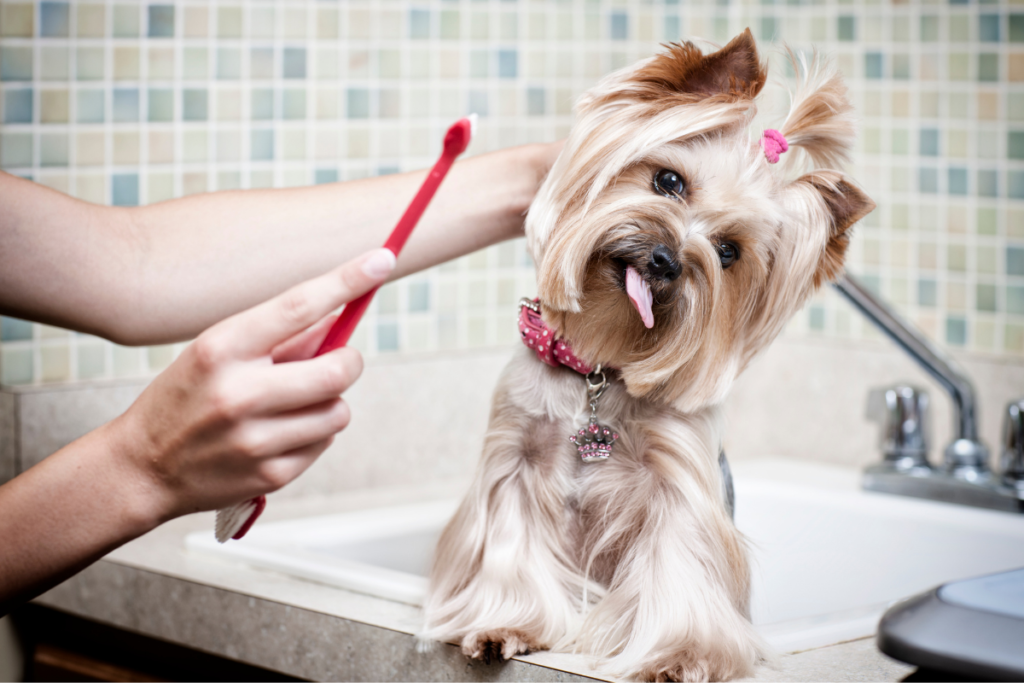

Which Dental Abnormalities Are Common In Small Breed Dogs?
Researchers have found that small dog breeds are not only more prone to periodontal disease, but also more likely to experience dental abnormalities compared to large breed dogs1. Below are some of the most commonly seen dental issues in toy and small breeds.
Retained Puppy Teeth
Although most puppies begin to lose their puppy teeth around 14 weeks old3, small breed dogs may retain some of those teeth (meaning they never fall out). If left untreated, this leads to teeth overcrowding, which can contribute to dental disease and oral health issues as the retained puppy tooth begins to sabotage the health of the adult tooth that’s trying to replace it4. Think of it as two cars fighting over one parking spot at Trader Joe’s—or, you know, whichever of your local stores has the tiniest parking lots on the planet.
Unerupted Teeth & Impacted Teeth
When adult dog teeth fail to erupt (aka “grow in”—don’t worry, they don’t erupt like volcanos), the unerupted tooth remains buried under the gumline3 and may eventually form a cyst6. If the unerupted tooth and cyst go untreated by extraction (removing the tooth), it can begin to destroy parts of the jaw and eventually cause your pup a lot of pain and swelling. Unerupted teeth are more common among flat-faced dog breeds3.
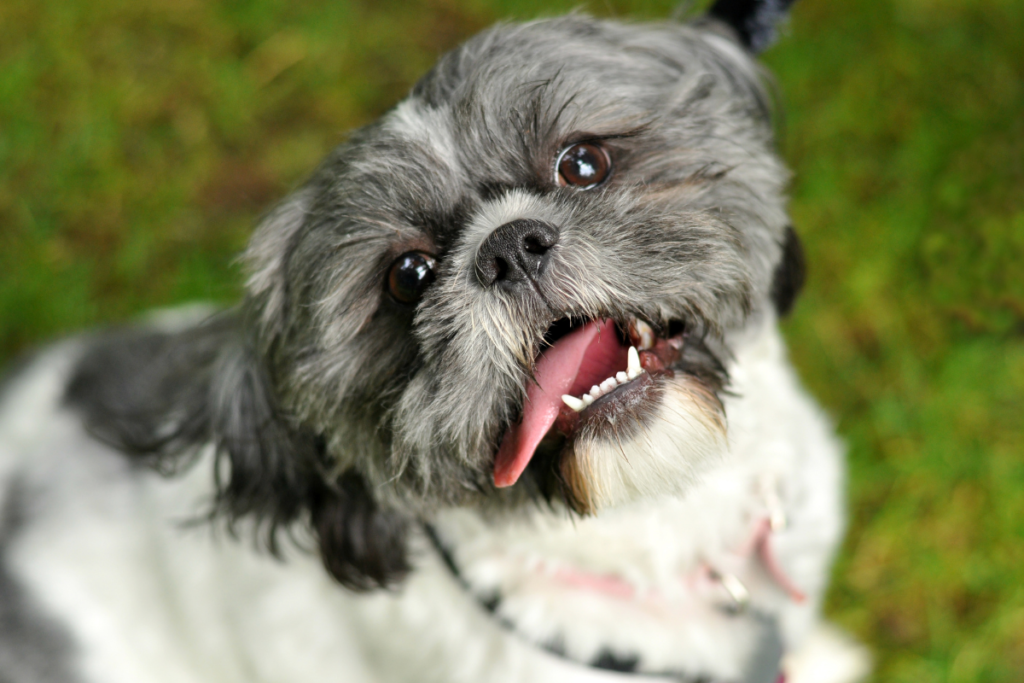

Missing Teeth
In cases where an adult dog’s tooth just doesn’t exist, and therefore can’t grow in, it doesn’t usually cause problems, but it’s important that your pup’s veterinarian takes x-rays or CT scans to verify that it’s actually missing and not actually impacted below the gumline. Teeth that have been broken with roots remaining below the gum, or teeth that have fallen out due to periodontal disease, may also be mistaken for missing teeth—even more reason to make sure your veterinarian double checks.
Malocclusions
A malocclusion means that, when the mouth is closed, the teeth do not align the way they should. This misalignment can happen in a few different ways. Malocclusions are often referred to as underbites or overbites. This can cause teeth to bump up against each other or bump up against soft tissue in the mouth, which can cause significant injury to the gums, hard palate, or teeth themselves.5
Tooth Overcrowding
Dogs typically have 42 permanent adult teeth, and the size of the teeth themselves is not always proportional to the size of the dog. In fact, tooth size is pretty resistant to breed shrinkage. This means that small breed dogs have teeth that are, objectively, just too big for their mouths. This translates to two things: tooth overcrowding, and jaw integrity problems.
Jaw Integrity Issues
When the roots of large teeth take up too much space in the jaw, it causes weak spots where the bone isn’t as thick as it should be. These weakened spots then become vulnerable to jaw fracture. This is especially common in small and toy breed dogs5.
Looking for a proactive approach to your dog’s dental health? BARK Bright pairs an enzymatic toothpaste with specially-shaped dental chews so your dog’s pearly whites stay in tip-top shape!


Which Small Breeds Are Most Prone To Dental Issues?
1. Toy Poodle


Unfortunately, toy poodles have the highest odds of dental disease compared to any other breed, according to a 2021 study2. Luckily, their very long lifespans help make up for what they lack in dental health! Just make sure you take precautionary measures (including at-home dental care) and work with your vet to keep their teeth in tip-top shape for life.
Major Concerns:
- Overcrowding
- Periodontal disease
2. Cavalier King Charles Spaniel
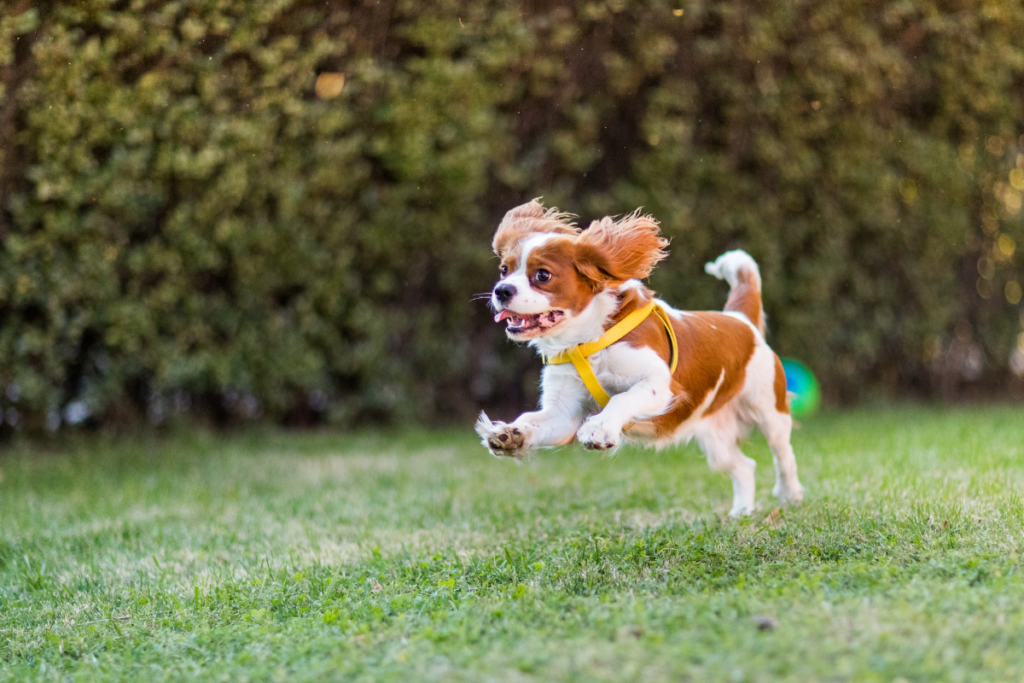

Cavalier King Charles spaniel pups rank among the top dog breeds prone to dental disease2, and are known for early onset periodontal disease as young as two years old. Teeth brushing is a necessity! (And so is rubbing those fluffy ears!)
Major Concerns:
- Periodontal disease
- Receding gumline
- Malocclusion (underbite)
- Overcrowding
3. Lhaso Apso


Lhaso Apsos may have quite a few dental concerns, but at least those hair styles are always fire!
Major Concerns:
- Periodontal disease
- Retained puppy teeth
- Malocclusion (underbite)
- Overcrowding
- Delayed tooth eruption
4. Yorkshire Terrier (Yorkie)
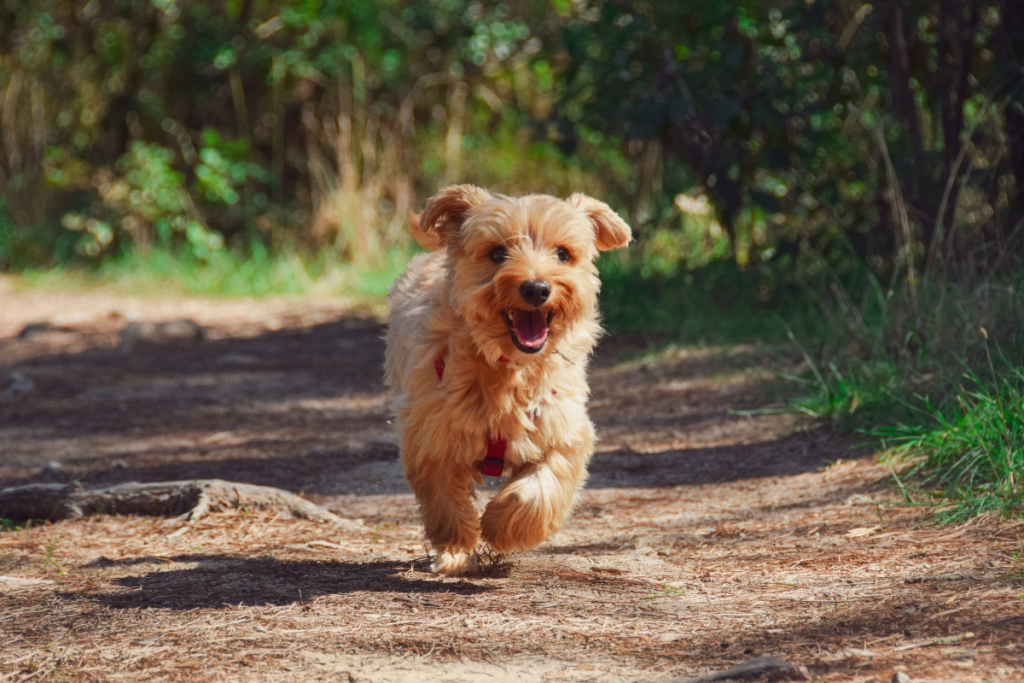

Yorkies tend to have some snaggle tooth problems. They sometimes retain their puppy teeth while their adult teeth start growing in and fighting for the same space. This can lead to teeth pointing off into all kinds of crazy directions and creating space to trap bacteria if the problem teeth are not extracted.
Major Concerns:
- Maloclussion
- Retained puppy teeth
- Overcrowding
5. Chihuahuas
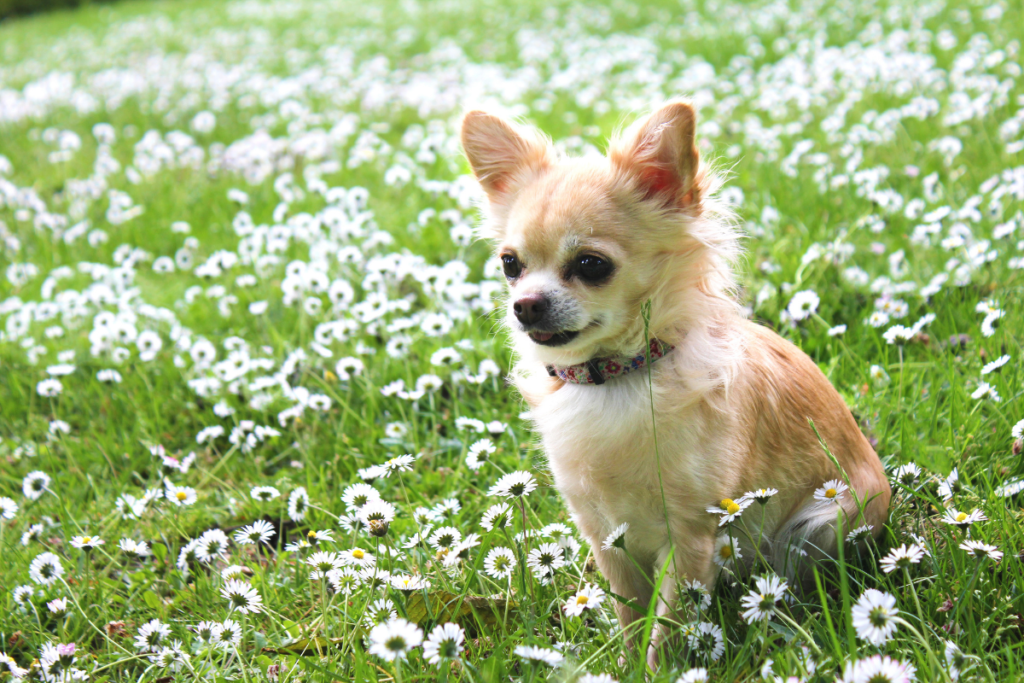

What if all the feisty Chihuahuas out there have just been trying to guard their own teeth this entire time?! We kid, but the daily dental battles raging inside those tiny Chihuahua mouths are no joke.
Major Concerns:
- Dental overcrowding
- Broken jaws
- Retained puppy teeth
- Impacted teeth
- Missing teeth
- Malocclusions
6. Miniature Dachshund


Dachshunds are known for having issues with periodontal pockets due to their elongated snouts. These pockets supply a cozy space for bacteria to hide and flourish, which can lead to gingivitis and dental disease.
Major Concerns:
- Gum disease
- Malocclusion (overbite)
- Periodontal pockets (spaces between teeth and bone loss where dental disease can flourish)
7. West Highland Terrier


The face of an angel; the teeth of a silly goose (y’know, if geese had teeth). Westies are prone to overbites, but are adorable regardless!
Major Concerns:
- Malocclusion (overbite)
- Periodontal disease
8. Pug


The short snouts of flat-faced breeds don’t exactly allow for a lot of space for proper dental alignment. Pugs are often known for their underbites and have a lot of issues with teeth overcrowding. (But pugs can overcrowd our space anytime!)
Major Concerns:
- Malocclusion (underbite)
- Overcrowding
- Periodontal disease
9. Shih Tzu
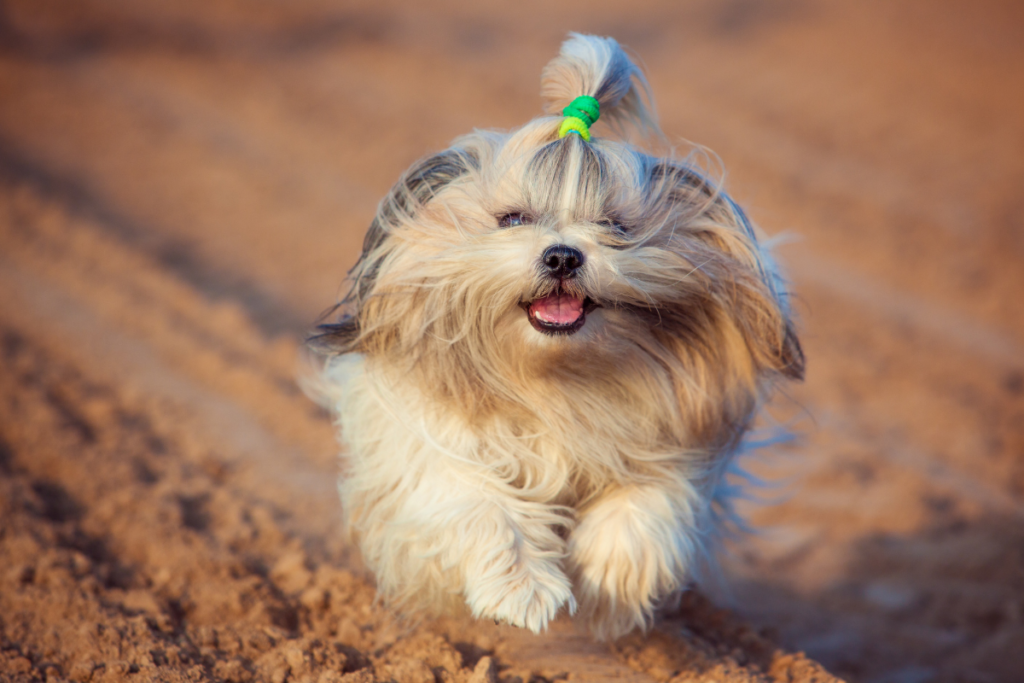

Shih Tzus tend to rack up a bunch of dental abnormalities. They’re not only prone to underbites—they also tend to have delayed tooth eruption too, which can lead to oral cysts.
Major Concerns:
- Malocclusion (underbite)
- Overcrowding
- Delayed tooth eruption
- Oral cysts
10. Pomeranian


Pomeranians are prone to both retained puppy teeth and tooth overcrowding, which can put them at a higher risk for periodontal disease.
Major Concerns:
- Overcrowding
- Periodontal disease
- Retained puppy teeth
Why Are Dental Abnormalities A Problem?
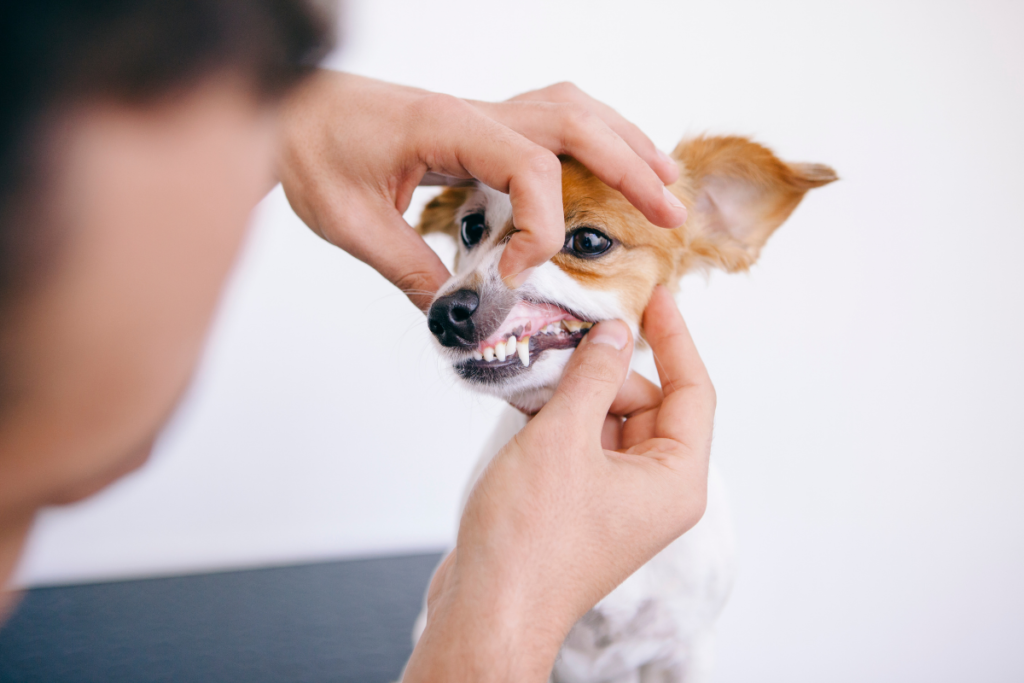

Dental abnormalities have a way of creating an atmosphere in your pup’s mouth for bacteria to thrive. Tightly packed teeth give bacteria and food particles secret crevices to hide in, and make the teeth harder to clean. Other abnormalities encourage gum inflammation and bleeding, giving bacteria an all-access pass to surrounding tissue, and even your pup’s bloodstream. Untreated dental abnormalities can lead to severe health issues, like:
- Gingivitis
- Periodontal disease
- Heart disease
- Kidney or liver disease
- Eye issues
- Diabetic complications
- Broken jaws
How To Help Prevent Dental Disease In Small Dogs
- Brush their teeth daily with dog-safe toothpaste
- Consider a daily dental chew and toothpaste combo
- Offer them plenty of chew toys (make sure they’re flexible enough to dent with your fingernail)
- Keep them up to date with vet check-ups and professional dental cleanings
Related Article: How To Brush Your Dog’s Teeth
This article has been reviewed by Margo Hennet, DVM.
Margo Hennet, DVM, cVMA, and veterinarian at BARK is a canine nutrition, health, & wellness connoisseur. She has a combined 10 years of experience in clinical medicine, research, and education—that’s 70 dog years of know-how—and graduated from Colorado State University as a Doctor of Veterinary Medicine. She completed specialized training in internal medicine prior to working as a general practitioner in Colorado, has authored peer-reviewed publications and textbook chapters, holds certification in veterinary medical acupuncture, and is a member of the American Academy of Veterinary Nutrition and American Veterinary Medical Association.
Sources:
1 Pavlica Z., V. Erjavec, M. Petelin: Teeth Abnormalities in the Dog. Acta Vet. Brno, 2001, 70: 65-72. https://www.researchgate.net/profile/Vladimira-Erjavec/publication/222113269_Teeth_Abnormalities_in_the_Dog/links/55e20d2908aecb1a7cc8319a/Teeth-Abnormalities-in-the-Dog.pdf.
2 O’Neill, D.G. et al. “Epidemiology of Periodontal Disease in Dogs in the UK …” Wiley Online Library, Journal of Small Animal Practice, 9 Aug. 2021, https://onlinelibrary.wiley.com/doi/full/10.1111/jsap.13405.
3 Reiter, Alexander M. “Dental Disorders of Dogs – Dog Owners.” Merck Veterinary Manual, Merck Veterinary Manual, 22 Mar. 2022, https://www.merckvetmanual.com/dog-owners/digestive-disorders-of-dogs/dental-disorders-of-dogs?query=periodontal+disease.
4 Kangas DVM, Katie B. “Are Small Dogs More Prone to Dental Problems?” Animal Wellness Magazine, 25 Jan. 2019, https://animalwellnessmagazine.com/small-dogs-dental-problems/.
5 Niemiec, B. et al. “World Small Animal Veterinary Association Global Dental Guidelines.” Wiley Online Library, Journal of Small Animal Practice, 26 July 2020, https://onlinelibrary.wiley.com/doi/10.1111/jsap.13132.
6 Mulherin, Brenda L. “Multiple Unerupted Teeth in a Dog.” Today’s Veterinary Practice, 4 Apr. 2022, https://todaysveterinarypractice.com/dentistry/multiple-unerupted-teeth-in-a-dog/.

